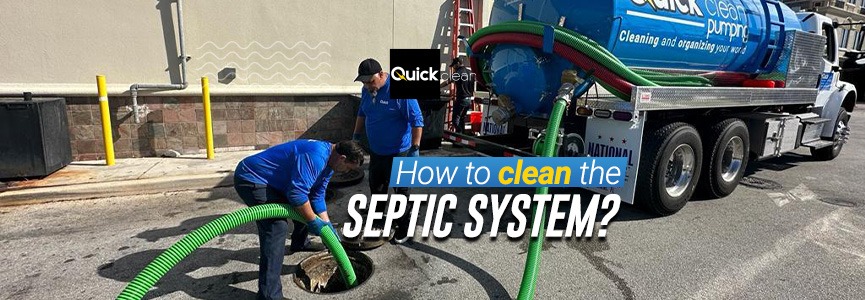How to clean the septic system?
If you have a septic system in your home, you know how important it is to keep it clean and maintained. A well-maintained septic system can last for decades, but if left unattended, it can cause costly problems and unpleasant odors.
In this article, we’ll show you how to do a natural septic system cleaning, without damaging the tanks for regular maintenance. In addition, we will show you how professional cleaning works in case you need deep system repairs.
How a septic tank is made up?
A septic tank is typically composed of several key components:
Concrete or Plastic Tank
The tank itself is the primary structure and is usually made of concrete or plastic. It’s buried underground and receives all the wastewater from a property.
Inlet Pipe
This pipe connects the plumbing system of the house to the septic tank. It transports all the wastewater generated from toilets, sinks, showers, and laundry systems into the tank.
Outlet Pipe
This pipe connects the septic tank to the drain field. It allows the treated wastewater, known as effluent, to flow out of the tank and into the drain field, where it undergoes further treatment.
Baffles
Inside the tank, there are often baffles or tees that help control the flow of wastewater. They prevent the solids from directly exiting the tank and ensure that only the liquid portion flows out.
Septic Tank Covers or Access Ports
These provide access to the tank for inspection, maintenance, and pumping. They are usually sealed to prevent groundwater from entering and to keep odors from escaping.
Layers within the Tank
A septic tank typically has layers of accumulated waste. The heavy solids sink to the bottom and form sludge, while lighter materials float on the top and create a scum layer. In between, the liquid effluent resides.
Anaerobic Bacteria
The wastewater undergoes partial treatment through a natural biological process. Anaerobic bacteria within the tank help break down the organic solids in the wastewater.
Septic systems are designed to effectively treat wastewater and release treated effluent into the drain field, where it undergoes further purification by the soil. Proper maintenance, regular inspections, and periodic pumping are essential for the efficient operation and longevity of a septic system.
Cleaning septic tanks for minor damage
As we saw before, it is very important that homeowners perform periodic cleaning of the septic system. In this process, it is also essential not to use chemicals that damage the tanks and pipes; instead, use natural methods with which the system will have a better performance.
We have encountered many housewives who wonder if vinegar can be used to clean the septic system. For them, the answer is YES. Vinegar and baking soda combined with other natural ingredients can be used as cleaning substances.
Baking soda, in particular, is environmentally safe and can be used to remove bacteria from toilets, sinks, bathtubs, and drains.
You may be interested in: All you need to know about lift station cleaning
On the other hand, harsh chemicals such as bleach or ammonia should NOT be used, as they can kill or disrupt the good bacteria, which are necessary to eliminate clogs and odors in septic tanks. In addition, good bacteria have the power to break down solid waste.
To manually clean the septic tank, you need a quarter cup of baking soda mixed with a half cup of vinegar. You add this mixture to the toilet and then two tablespoons of lemon juice, finally you flush the toilet so that the substance is distributed through the pipes. The chemical reaction produced will break down the dirt and generate a pleasant smell.
Septic system cleaning for severe damage
Now, if what you need is a deep cleaning of the entire septic system, you will need to call a professional team such as Quick Clean, which has hose trucks, with the ability to suck out the wastewater.
It is important that you do not perform this process yourself, as gas pipes are present in the septic system and improper handling by an inexperienced person can lead to fatal consequences.
Septic Tank Location
Many times it is necessary to excavate the soil to locate the access cover. Then use a long stick to measure the depth of the logo layers of the septic tank.
Pumping the septic tank
Contact Quick Clean to pump the waste and water out of the septic tank with our hose trucks.
Inspecting the tank and pipes
After the tank is emptied, it’s time to inspect the tank for damage or leaks. In this step, our experts will check the tank’s inlet and outlet pipes for clogged, cracked, or other problems.
Cleaning
Disperse the cleaning product of your choice in the tank to break down the remaining waste and prevent future clogging.
This is how easily you can clean your septic system with the help of Quick Clean’s specialized pumping services in miami equipment.
As a final recommendation, do not flush harmful materials down the drain, as they can damage the tank and contaminate the soil. Additionally, schedule general septic system maintenance every 3 to 5 years.

